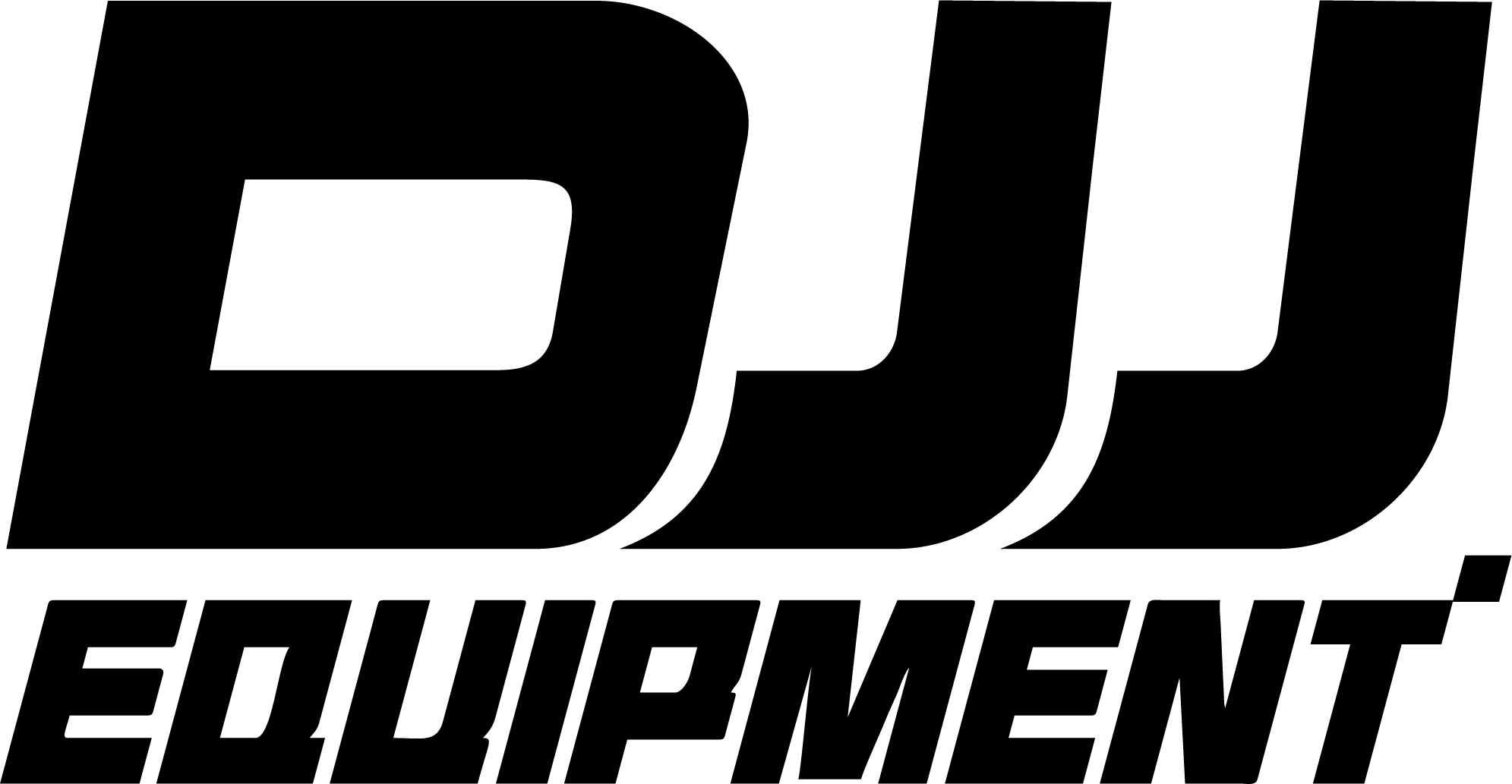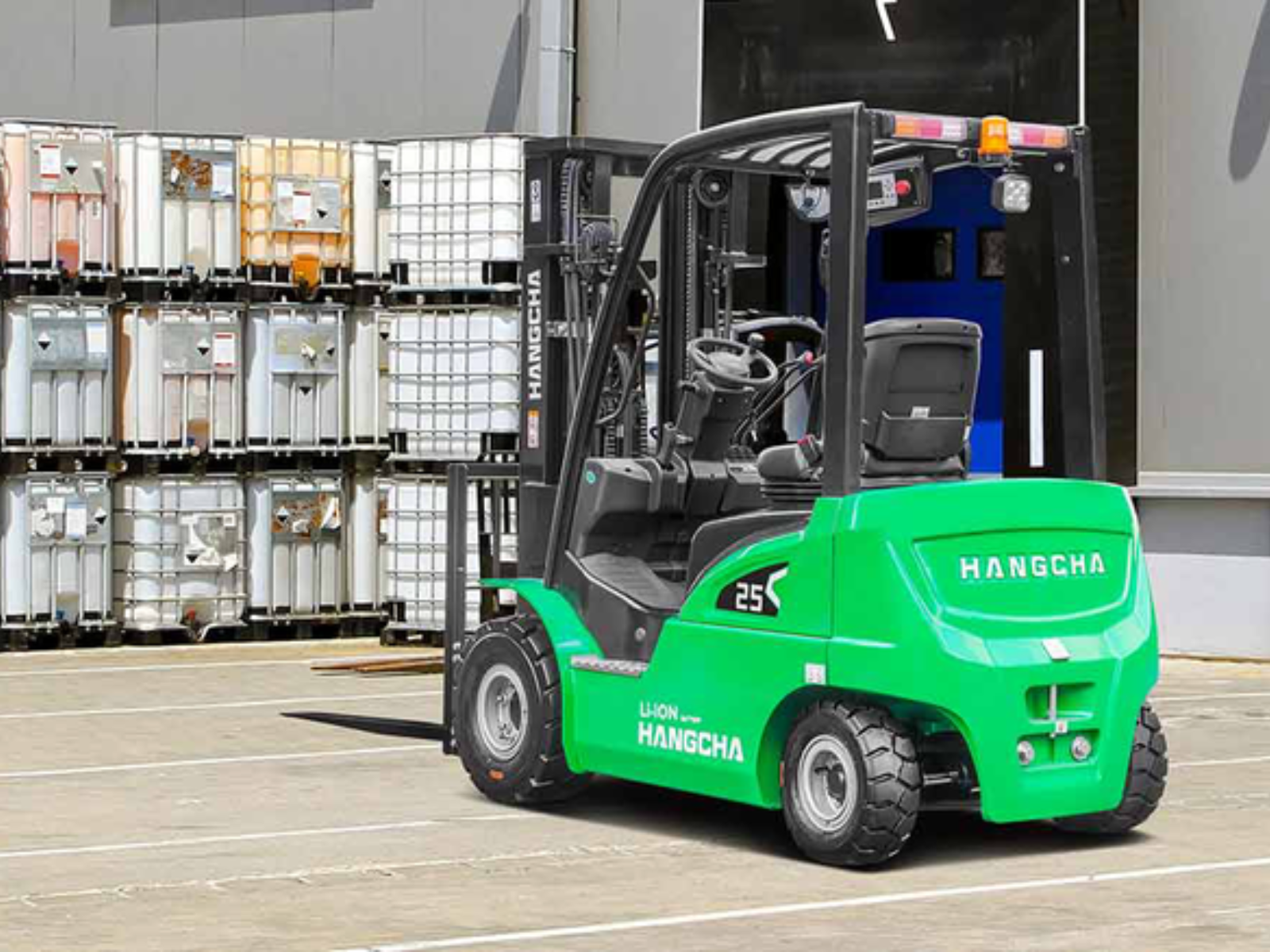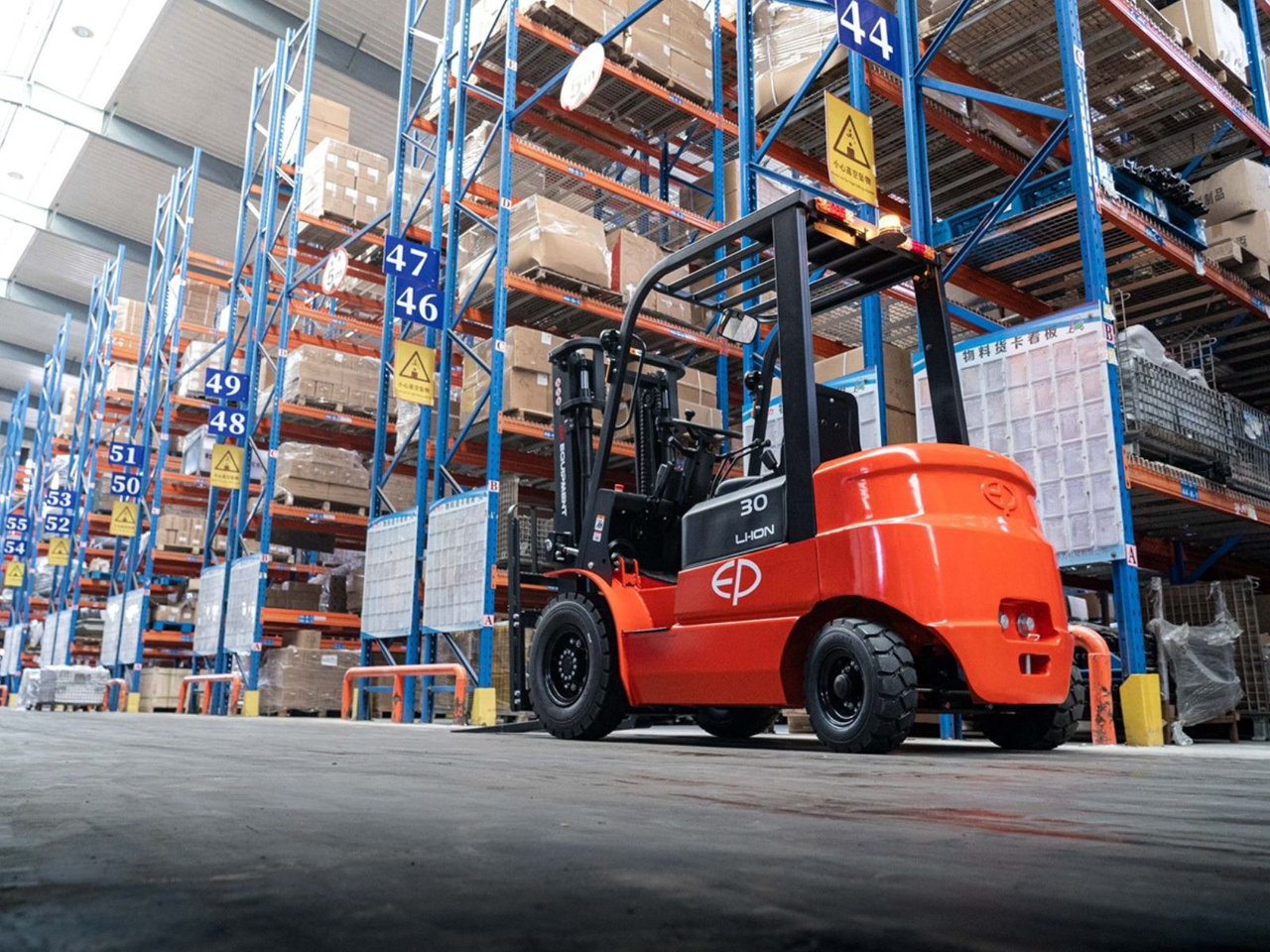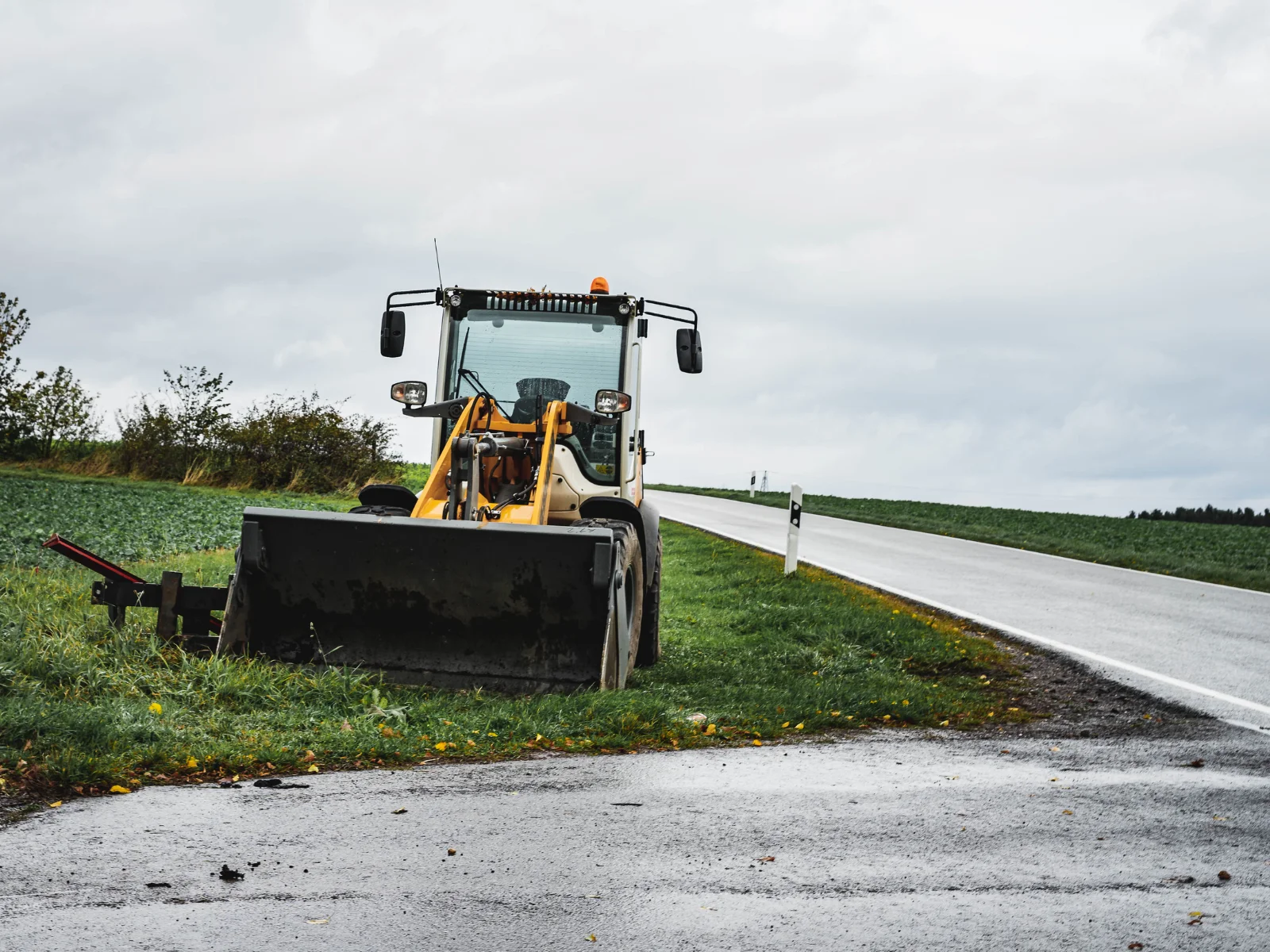If your warehouse operations involve unloading or working inside shipping containers, you’re not alone. Many Australian businesses—especially in logistics, retail distribution, and manufacturing—face the same challenge:
Can my forklift safely and efficiently operate inside a container?
At DJJ Equipment, we’ve worked with a wide range of clients facing similar needs. Based on our field experience, we’ve developed a comprehensive guide to help you choose the right forklift for container applications and narrow-aisle warehouse work.
Essential Specs for Container-Compatible Forklifts
Mast Collapsed Height ≤ 2.28m
Standard 20ft and 40ft containers typically have an internal height between 2270mm and 2340mm.. To ensure safe entry and exit, your forklift’s collapsed mast height must be ≤ 2.28m.
Many standard forklifts are equipped with a Wide View Mast, which lifts the entire mast when raising the forks—making it unsuitable for low-clearance operations inside containers. A better option is a forklift with a Wide View Full Free Lift Triplex Mast, which offers three key advantages:
- Full Free Lift: Forks can rise up to ~1.5m without raising the mast—ideal for stacking inside containers
- Triplex Design: Provides extended lift height, usually ≥ 4.5m
- Low Retracted Height: Most models are under 2.28m, making them container-ready
HANGCHA, one of our key suppliers and a top 10 global forklift manufacturer, offers Full Free Lift mast options across most of their compact and mid-size models to meet diverse operational needs, including container handling.
Lifting Height ≥ 3m
To stack two or three pallet tiers inside a 40ft container, a forklift with a lifting height of at least 3m is recommended.
Vehicle Width ≤ 1.1m
Although standard containers have an internal width of 2350mm, the usable aisle width is narrower due to:
- Clearance for cargo or racking on both sides (100–150mm each side)
- Internal corrugations and structural ribs (reduce flat wall space)
- Safety margins for maneuvering
To ensure smooth entry and safe operation, the maximum forklift width (including tires) should not exceed 1100mm.
If your forklift exceeds this width:
- It may not enter the container smoothly or may scrape the walls
- It can’t center properly, risking imbalanced loading
- It will require frequent repositioning inside tight spaces
Lithium Battery for Indoor Safety
Electric lithium forklifts are ideal for enclosed spaces like containers. Unlike internal combustion forklifts, they emit no toxic exhaust gases and operate with minimal noise—improving safety and environmental conditions.
Standard Climbing Ability ~10%
Container floors are often elevated above the dock or warehouse floor, requiring the use of dock boards or ramps. Most electric forklifts have a climbing ability of around 10%. Always confirm this spec to ensure compatibility with your site’s slope or ramp.
Ground Must Be Even for Reach Trucks
Reach trucks have limited ground clearance and are not suitable for rough or uneven floors. If you’re working inside containers with wooden floors or on sloped terrain, use a counterbalance forklift instead. Reach trucks are better suited to smooth uneven surfaces.
Common Application Scenarios in Australia
Based on our experience with Australian customers, here are four common forklift use cases that involve container operations:
- Primarily Indoor Operations with Occasional Container Unloading: Most activities are done inside the warehouse, with occasional unloading from shipping containers.
- Indoor Warehouse Operations with In-Container Handling: Forklifts are required to enter and work inside the container regularly, often stacking or relocating pallets directly inside.
- High-Level Stacking and Intensive Storage Operations: Warehouses with limited floor space may require high racking and tight aisle maneuvering. Triplex masts and narrow-body electric forklifts are preferred.
- Mixed Indoor and Outdoor Loading with Frequent Dispatch: Forklifts operate in both indoor and outdoor settings, unloading containers and dispatching goods multiple times per day.

Final Advice Before You Buy
Forklifts under 2.5T, when properly configured, can already meet most container entry and unloading needs. For businesses handling occasional container tasks, a 2T lithium forklift may be more than sufficient.
The key to choosing the right forklift is first understanding your primary usage scenario, then checking the technical specs.
✅ Purchase Checklist:
- Identify whether your operations involve working inside or only outside containers
- Look for the Mast Collapsed Height on the product brochure (sometimes listed as “Retracted Mast Height” or “Lowered Height”)
- Contact your local dealer and provide your location and warehouse details. At DJJ Equipment, we also offer on-site measurements to ensure your forklift can navigate your space and meet your container usage needs.
For personalised advice, contact DJJ Equipment — we’ll help you choose the right machine for your operation.
— FAQ —
Lifting a full shipping container requires a heavy-duty forklift, such as a top loader or reach stacker. These machines are specifically designed to handle the extreme weight and size of loaded containers, often lifting from the top and stacking multiple units high. Standard forklifts under 2.5 tons, commonly used in warehouses or farms, are not suitable for this task.
A reach truck, also known as a high reach forklift, is a type of forklift designed for narrow aisles and high stacking in warehouses. It has extendable forks that “reach” into racking, allowing it to lift loads to great heights while maintaining a compact body. Reach trucks are ideal for indoor use where space is tight and vertical storage is important.
The most commonly used forklift is the counterbalance forklift. It features a simple design with forks in the front and a weight at the back to balance heavy loads. Counterbalance forklifts are versatile and used across industries—from warehouses to construction sites.
Class III forklifts are electric-powered hand trucks, including pallet jacks and walkie stackers. They’re operated by walking behind or riding on them and are ideal for light-duty tasks like moving pallets in warehouses and small storage areas.
A free lift mast allows the forks to rise vertically without increasing the overall height of the mast. It helps operators lift loads without the mast extending upward immediately, improving safety and flexibility in tight spaces.






.webp)